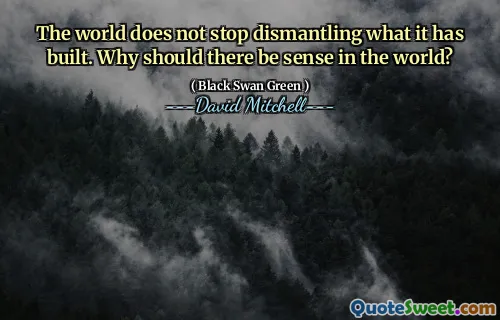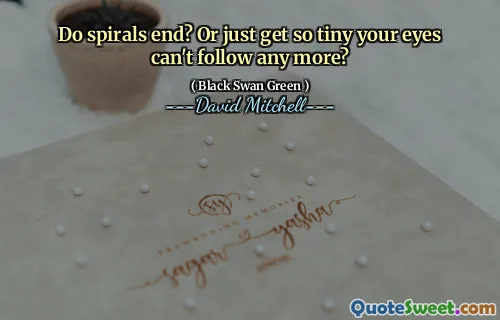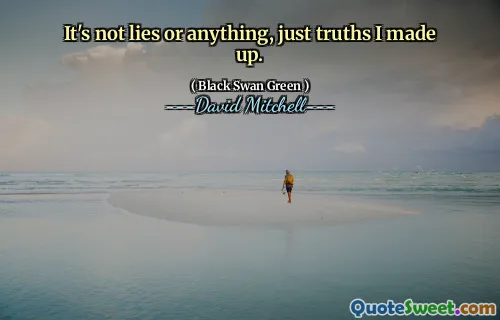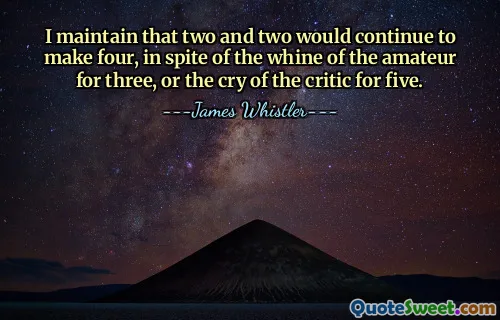
Do spirals end? Or just get so tiny your eyes can't follow any more?
This quote provokes a contemplative exploration of infinity and the nature of complexity. Spirals, often seen as symbols of growth, cycles, and eternity in various cultural contexts, seem at first glance to be unending patterns. But the question raises a fascinating notion: could they simply diminish in size until they become imperceptible? This idea touches on the concept of limits in mathematics, where a pattern can continue indefinitely while approaching a specific point. It suggests that what we perceive as endless may, in reality, be a matter of perspective and scale.
Through the lens of personal reflection, it invites us to consider the limits of our perception—how often we encounter phenomena that look boundless but are, in fact, finite or through a different vantage point, once vanished from view. It's a reminder of humility in our understanding, acknowledging that many mysteries may not be fully grasped simply because they span beyond our sensory reach.
Moreover, there's a poetic beauty in the imagery. Spirals are found naturally, from galaxies to shells, illustrating the universe's endless cycles and the intertwined complexity of life. The idea that these spirals could become too tiny for our eyes evokes thoughts about the microcosm—the tiny, unseen forces that shape existence yet remain beyond our immediate perception.
This quote also subtly hints at the philosophical debate between the infinite and the finite, provoking questions about the end of patterns and the limits of human perception. It challenges us to think about whether resolutions are ever truly endings or merely transformations into lesser forms, perhaps invisible ones. At its core, it's a reflection on the infinite depths that exist in both the universe and our minds, waiting to be explored even if only through imagination or scientific inquiry.
Book: (Black Swan Green) - Author: ---David Mitchell---











